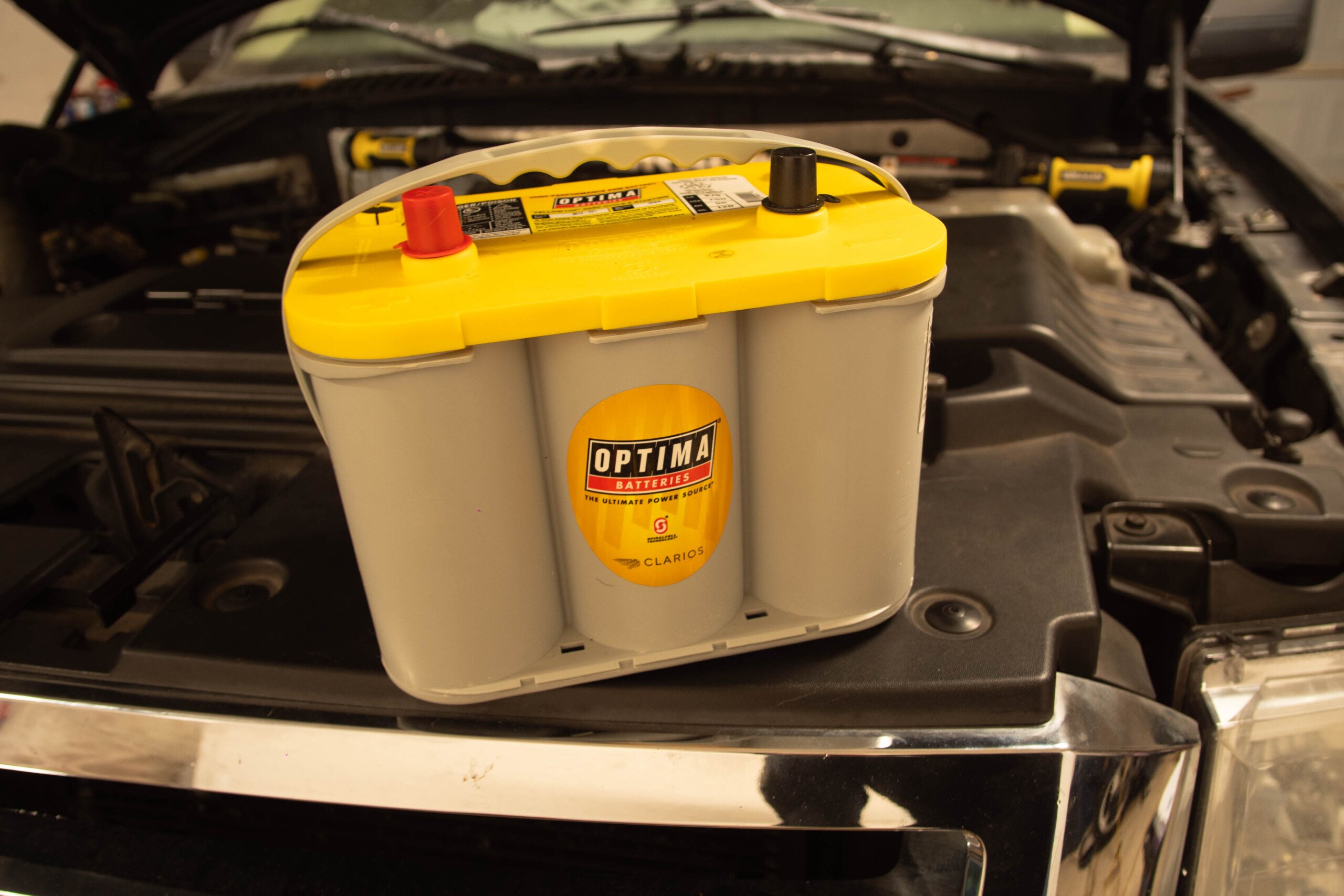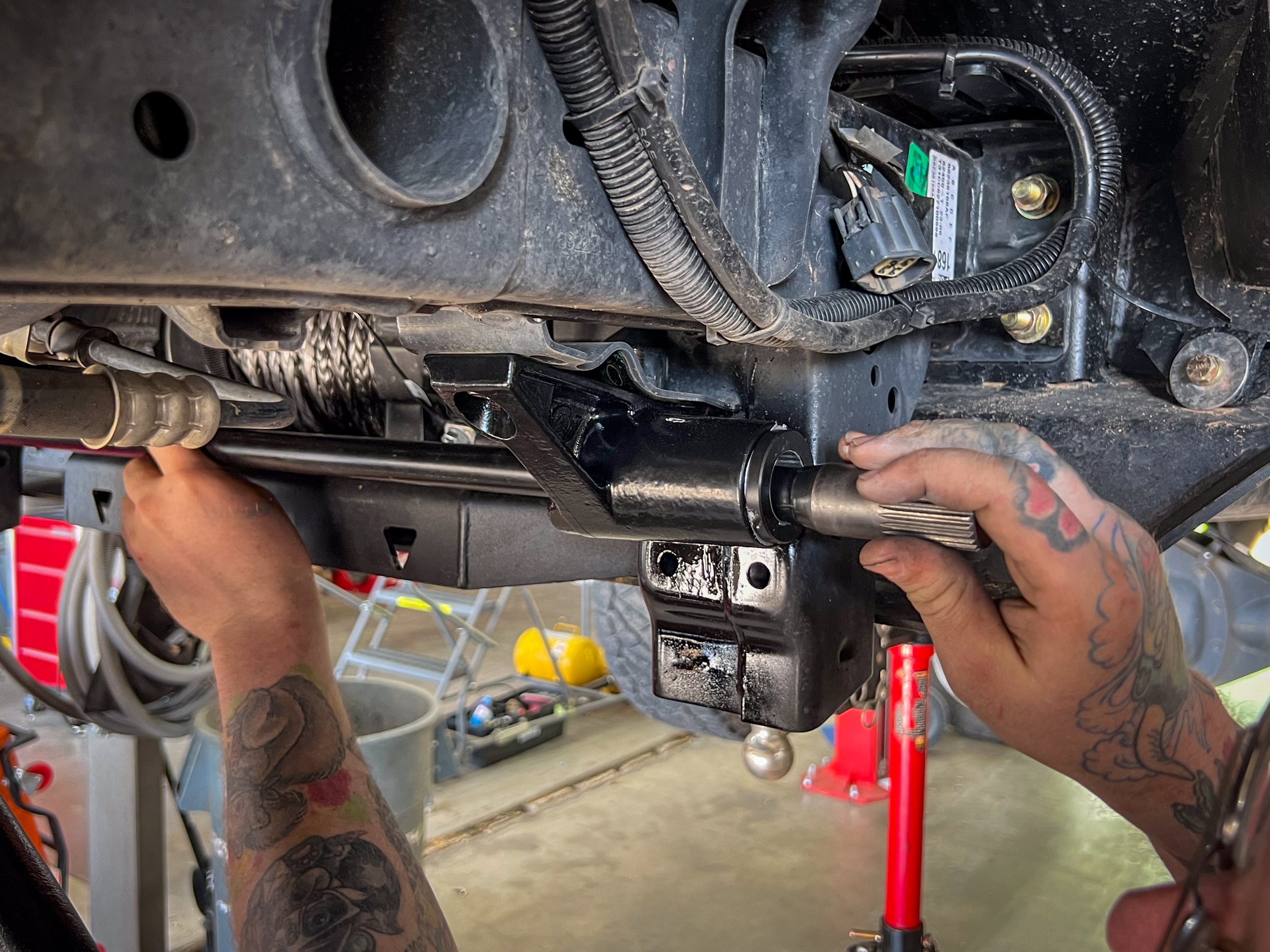GMRS radio is permeating off-road communications. But what is GMRS and why is it hot in the off-road world? Well, in this piece we’ll examine what GMRS is and dig into things like the two main radio types. We’ll also delve into topics like antenna placement and how to get a GMRS license. And we’ll look at a handy feature of GMRS, the ability to access distance-enhancing repeaters.
GMRS Is One Of Several Radio Services
Your cellphone is a great communication device and it’s always good to bring it along when traveling off-road. However, cellphones aren’t so great for things like easy, continuous communication between vehicles when off-roading in a group. And many of the places we off-road don’t have cellphone service anyway. This is where a standalone radio service like GMRS (General Mobile Radio Service) comes into play. GMRS is one of several common radio services available in the U.S. Others include FRS (Family Radio Service), MURS (Multi-Use Radio Service), and CB (Citizen’s Band Radio Service).
GMRS Radio Defined
GMRS has 30 total channels. Channels 1-7 are limited to a maximum effective radiated power (ERP) of 5 watts. Channels 8-14 are limited to a maximum of 1/2-watt ERP (the FCC only allows handheld radios to transmit on these channels). Finally, channels 15-22, and the eight repeater channels, can have a maximum ERP of 50 watts. GMRS operates in the 462 MHz and 467 MHz UHF (ultra high frequency) bands. Like CB, FRS, and MURS, channel numbers are assigned to frequencies for ease of use. Thus, most GMRS radios display channel numbers instead of frequencies.

We tested Rocky Talkie’s new 5-watt radio. It has IP67 waterproofing, a protective rubber padding, shatterproof LED screen, removable antenna, and USB-C charging. And it’s repeater capable. The link to the review is at the bottom of this page.
GMRS Handy Talkies
One of the cool things about GMRS is there are a slew of radios on the market today. Radios run from basic to loaded with features. And of course, there’s one for almost every budget. Selecting a GMRS radio is sorta like buying tires for your 4×4. All tires are black and round but vary significantly in features and price. Most GMRS radios on the market are “handy talkies,” commonly known as “HTs.” HTs typically have transmit power between 2 and 5 watts ERP on channels 1-7 and 15-22. These handheld radios range from very basic to what is often referred to as “prosumer.” Generally, the more you spend, the more features you get. The cool thing about an HT is that you can use it in and out of your 4×4.
HT Radio Features
Many GMRS HTs have a removable antenna. This allows you to use a short antenna in compact spaces or a longer antenna to maximize transmit and receive range. Furthermore, most radios with removable antennas allow you to connect an external vehicle-mounted antenna to increase range. Something to take into consideration when shopping for a GMRS HT is how the radio’s battery is charged. For example, some radios require a dock and a wall plug, which is a tad inconvenient on the trail. Some radios have a USB-C charge port for easy, on-the-go charging. Additional considerations: Some radios can be customized via software and/or the front panel so you can name and save channels with specific “privacy tones.” Some HTs also allow variable transmit power output that can help conserve battery power. Tip: Since wheeling often includes dirt, mud, and sand, look for a radio with a robust IP rating so it’ll survive said environments.

An example of a powerful GMRS mobile radio is the 50-watt Midland MXT500. This radio is super easy to use and it’s repeater capable.
Mobile GMRS Radios
“Mobile” GMRS radios are 12-volt-powered and designed to be mounted in a vehicle. They can offer up to the GMRS 50-watt max limit. Buying a 50-watt mobile GMRS radio is the equivalent of buying a 4×4 with the most powerful engine available for that model. The benefit of a 50-watt GMRS radio is that it typically offers the most communication range in the GMRS world. It’s important to note that because of the amp draw of a 50-watt radio, it will need to be wired directly to your 4×4’s battery. However, there are lower wattage GMRS mobile radios. These typically cost less than a 50-watt radio and they draw less amperage. Most of the radios that are 20 watts or lower come equipped with a connector that can simply plug into your vehicle’s 12-volt power socket. This helps to make radio installation quick and easy.

Midland’s MXT275 15-watt GMRS radio has a fully integrated control microphone. The MXT275 is good for vehicles with limited dashboard space where mounting a traditional radio won’t work. The radio’s control unit can be mounted out of sight. This radio comes equipped with a 12V power plug so installation is quick and easy. The Midland MXT575 has the same design but kicks out 50 watts.
Mobile GMRS Radio Features
Most mobile GMRS radios offer the ability to select from lower transmit wattage settings. This is a benefit that allows you to dial back the radio’s ERP when long range isn’t needed. Like when you’re in a group of wheelers traveling closely together on a trail. Like HTs, mobile GMRS radios are available with a wide feature set, and they cover a wide range of price points.
GMRS Radio Range
There are a slew of factors that determine how far GMRS radios can communicate radio-to-radio (non-repeater). Range will be affected by many things including obstructions (like trees, canyon walls, hills, and so on), atmospheric conditions, and the power of the radios being used. We’ve communicated over seven miles in rolling Illinois farmland with a pair of 5-watt GMRS HT radios. But those same radios in the city could barely pull off a mile of communication due to obstructions.
Repeaters Vastly Increase Communication Range
A major benefit of GMRS radio is the ability to utilize repeaters to vastly increase communication range. FRS, MURS, and CB are not allowed to utilize repeaters. By design, GMRS radios make using repeaters very easy. You simply select a GMRS repeater channel, enter the PL tone(s) for that repeater, and talk. But what is a repeater, and what is a PL tone?
Well, a repeater typically receives a radio transmission on one frequency, amplifies it, and retransmits it on another frequency. All eight GMRS repeater channels transmit your voice on one frequency and receive on another. A PL tone is a subaudible tone produced by the radio that opens the input side of the repeater to accept your radio transmission. If the repeater’s PL tone is not received, the repeater will not allow your radio communication to be processed by the repeater.

Midland’s MXR10 repeater is a slick, portable way to extend the reach of GMRS radios. It can output 10 or 5 watts and it can be purchased in a bundle that includes the repeater, antenna, antenna mount, and cable.
More About Repeaters
Most repeaters, and their antennas, are located at higher elevations such as mountaintops, tall buildings, and so on. This allows for increased receive and transmit range. Exactly how far you’ll be able to communicate using a repeater will depend on several factors. They include obstructions between you and the repeater, the altitude of the repeater’s antenna, and your altitude. Additionally, atmospheric conditions, the output power of your GMRS radio, and the output power of the repeater all affect range. Example: While in Tennessee recently, we used a 5-watt HT radio to access a mountaintop repeater 19 miles away. We spoke with a radio operator 20 miles on the other side of the mountain. Because of the signal-blocking mountain and the output ERP of our radio, the 39-mile distance would probably not have been possible without the repeater.

This Wouxun KG-905G is an example of a repeater-capable HT. It’s a 5-watt radio that is simple to set up for repeater use.
Some GMRS Radios Have Repeater Capability, Some Don’t
It’s important to note that not all GMRS radios offer repeater compatibility. The radios that have repeater compatibility usually advertise the feature. In general, if repeater compatibility is not mentioned in the radio’s description, then it’s not included. Many HTs include repeater compatibility and almost all mobile radios can operate on repeaters.
Who Owns The Repeaters?
There are many GMRS repeaters in the U.S. Purchasing, installing, and maintaining repeaters is expensive, but licensed GMRS users can typically use the majority of them for free. However, some repeaters require permission to use, some charge a fee, and some are private. To see if there’s a GMRS repeater near you, or your favorite wheeling location, visit mygmrs.com. The site lists most GMRS repeaters and includes PL tone information along with any necessary permissions or fees. It’s also worth noting that some GMRS repeaters link together, usually via the internet. This means that when you transmit to a linked repeater, the linked network sends your voice to all the repeaters. A linked network of repeaters can span multiple states. This allows you to communicate with GMRS users hundreds or even thousands of miles from your location.

Antenna placement is important for a GMRS radio to utilize its full potential. Height is might in the antenna world. This is Midland’s NMO-mount MXTA26 6 dB gain whip antenna on Midland’s MXTA12 magnetic antenna mount.
Height Is Might When It Comes To Antenna Placement
Proper antenna selection and placement is a critical component to a well-functioning GMRS system. Even the best, high-power GMRS radio won’t get good range if the antenna is subpar and/or poorly placed. A GMRS radio connected to a poorly placed antenna is like fitting your powerful 4×4 with bald tires. You’ll have no way to efficiently put that power to good use. You can find several high dB gain GMRS-tuned antennas with quality coaxial cable on the market. Which antenna you choose may depend on what type of 4×4 you have and how you plan to mount it. These days, manufacturers produce many vehicle body panels using aluminum. This means simply plopping a magnet-mount antenna on your 4x4s roof may not be an option. Finally, to help maximize your GMRS radio’s range, it’s important to mount the antenna as high as possible. Height is might in the antenna world, and can significantly improve your radio’s range.
A GMRS Radio License Is Required
Important note: GMRS requires a license from the Federal Communications Commission (FCC). But the license is easy and inexpensive to get. It’s only $35 and good for 10 years. Bonus: The FCC says, “If you receive a license, any family member, regardless of age, can operate GMRS stations and units within the licensed system.” To obtain a GMRS license go to the FCC Universal Licensing System (ULS) website. There you can complete the application and pay the fee. Once your application is approved, you’ll be issued a callsign that consists of four letters and three digits. GMRS rules require that you ID using your callsign “following a single transmission or a series of transmissions and after 15 minutes and at least every 15 minutes thereafter during a series of transmissions lasting longer than 15 minutes.” More information on the FCC’s GMRS requirements is on the National Archive and Records Administration website.
Bottom Line
GMRS radio is a great addition to your 4×4’s arsenal of off-road tools. It offers easy, consistent, short- and long-range communication. There’s a wide range of GMRS radios available on the market and the GMRS license is inexpensive and easy to get.
Related Story
GMRS Radio Review: Rocky Talkie’s IP67-Rated, Repeater Compatible, 5 Watt Radio
Photos: Midland USA and Ken Brubaker




